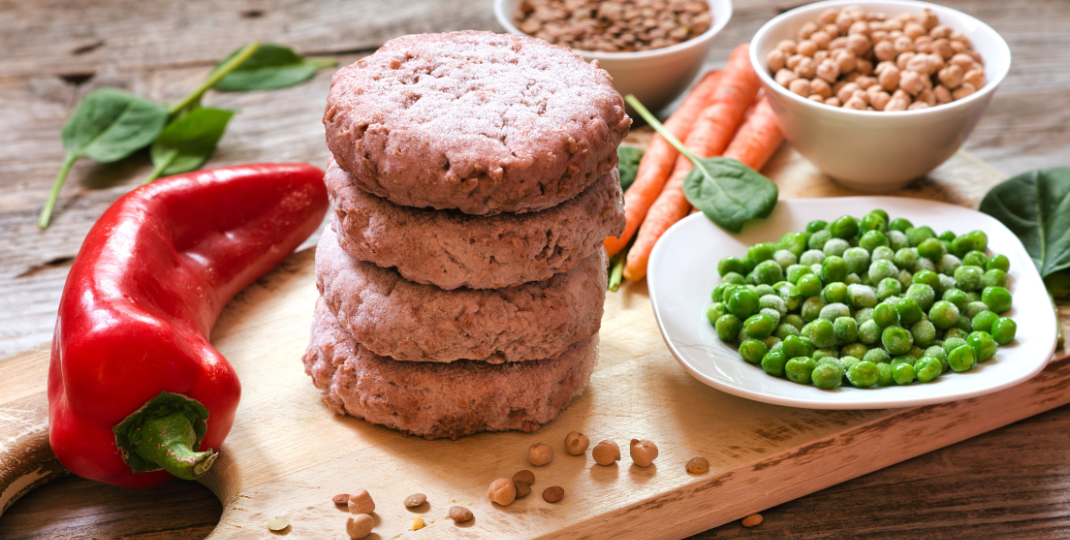Single cell protein (SCP) is a revolutionary and sustainable food product that has gained significant attention in recent years. SCP is derived from microorganisms, such as bacteria, yeast, or fungi, which are grown on various organic materials, including agricultural waste, industrial byproducts, or even carbon dioxide. These microorganisms undergo fermentation and produce high-quality protein, often with a composition similar to traditional animal-based proteins. Single cell protein holds immense potential as a viable alternative protein source to meet the growing global demand for food while reducing environmental impacts associated with conventional livestock farming. In this article, we will explore the production process, nutritional benefits, and potential applications of single cell protein in addressing food security challenges and promoting sustainability.

What is the process used to produce single cell protein?
The process used to produce single cell protein involves the cultivation and fermentation of microorganisms, such as bacteria or yeasts, in bioreactors. These microorganisms are grown on a nutrient-rich media containing carbohydrates, proteins, vitamins, and minerals. During fermentation, the microorganisms consume these nutrients and convert them into biomass, which contains high levels of protein. The biomass is then harvested, processed, and purified to obtain the single cell protein product, which can be used as a food source for humans or animals. This process offers a sustainable and efficient way to produce protein, as it requires less land, water, and resources compared to traditional animal agriculture.

What are the main sources of raw materials for single cell protein production?
The main sources of raw materials for single cell protein typically include agricultural and industrial by-products. These can range from crops like corn, wheat, and soybeans to waste products such as distiller's grains, molasses, and food processing residues. Additionally, microorganisms can be cultivated using wastewater or carbon-rich substrates like glycerol or methane as feedstock. The choice of raw material depends on various factors including availability, cost-effectiveness, and nutritional requirements of the desired single cell protein product.
How does the nutritional composition of single cell protein compare to traditional protein sources?
Single cell protein (SCP), also known as microbial protein, is a type of protein derived from microorganisms such as bacteria, fungi, and algae. The nutritional composition of SCP can vary depending on the specific microorganism used, but in general, it has been found to be comparable or even superior to traditional protein sources. SCP typically has a high protein content, often exceeding 50%, and is rich in essential amino acids necessary for human nutrition. It is also a good source of vitamins, minerals, and other nutrients. Furthermore, SCP is known to have a lower fat content compared to many animal-based protein sources, making it a potentially healthier option. Additionally, SCP production has the potential to be more sustainable and environmentally friendly than traditional protein sources, as it can be cultivated using renewable resources and requires less land, water, and feed inputs. Overall, the nutritional composition of single cell protein makes it a promising alternative to traditional protein sources.
Are there any potential health risks associated with consuming single cell protein?
There are no known major health risks associated with consuming single cell protein (SCP). SCP is typically derived from microorganisms like bacteria, fungi, or algae, which are safe for human consumption. However, it is important to ensure that the production and processing of SCP adhere to strict quality control measures to avoid any potential contamination or allergenicity issues. Additionally, individuals with specific dietary restrictions or allergies may need to be cautious and seek professional advice before incorporating SCP into their diet. Overall, when produced and consumed safely, SCP offers a promising alternative protein source with minimal health risks.
Can single cell protein be used as a complete substitute single cell protein product for animal-based protein in food products?

Single-cell protein, also known as microbial protein, refers to proteins derived from microorganisms such as bacteria, fungi, or algae. While it can be a valuable source of protein, it may not be a complete substitute for animal-based protein in all food products. Animal-based proteins contain a wide range of essential amino acids and nutrients necessary for human health, which may not be present in sufficient amounts in single-cell protein. However, with proper fortification and supplementation, single-cell protein can still serve as a viable alternative or supplement to animal-based protein in certain food products, especially in areas where access to traditional protein sources is limited or for individuals following specific dietary restrictions.

What is the environmental impact of producing single cell protein compared to traditional protein sources?
Producing single cell protein (SCP) as a protein source has several environmental benefits compared to traditional protein sources. SCP is typically produced using microorganisms that are cultured in controlled environments, such as bioreactors, which require less land and water compared to traditional livestock farming. This reduces the pressure on natural resources and minimizes habitat destruction associated with agriculture. Additionally, SCP production emits lower levels of greenhouse gases, such as methane, as it does not involve livestock digestion processes. Finally, SCP can be produced using waste or by-products from other industries, thereby promoting a circular economy and reducing waste disposal. Overall, producing SCP has a smaller ecological footprint and contributes to sustainable food production systems.
Are there any regulatory concerns or limitations on the use of single cell protein in food products?
There are some regulatory concerns and limitations on the use of single cell protein (SCP) in food products. SCP is a type of protein derived from microorganisms like bacteria, fungi, or algae. One concern is the safety of using SCP as an ingredient, as it needs to undergo rigorous testing and assessment to ensure it does not pose any health risks. Additionally, there may be labeling requirements to clearly indicate the presence of SCP in food products. Furthermore, regulations surrounding genetically modified organisms (GMOs) may also apply, as some SCP production methods involve genetic engineering. Overall, while SCP has the potential to address global food security and sustainability challenges, its regulatory landscape needs to be carefully navigated to ensure consumer safety and transparency.

What are the potential applications and market opportunities for single cell protein beyond food production?

Single cell protein (SCP) has potential applications and market opportunities beyond food production. SCP can be used as a sustainable alternative to traditional animal feed, reducing the environmental impact of livestock farming. It can also be utilized in the production of biofuels, where it offers a renewable and carbon-neutral source of energy. Additionally, SCP has applications in the pharmaceutical industry, where it can be used for the production of therapeutic proteins and vaccines. Furthermore, SCP can be utilized in waste management, converting organic waste into valuable protein products. Overall, the versatility of SCP opens up various market opportunities in sectors such as agriculture, energy, healthcare, and waste management.
Exploring the Potential of Single Cell Protein: A Revolutionary Solution for Sustainable Food Production
In conclusion, single cell proteins hold immense potential as a sustainable and efficient solution to combat global food security challenges. With their ability to be produced from diverse and abundant feedstock sources, such as algae, fungi, and bacteria, these products offer an alternative to traditional livestock-based protein sources. Single cell protein not only provides a high-quality and nutrient-dense protein source but also requires significantly less land, water, and resources compared to conventional animal agriculture. Furthermore, advancements in technology and research continue to enhance the nutritional profile and taste of single cell protein, making it an attractive option for both consumers and manufacturers. As we grapple with the increasing demand for protein in a rapidly growing population, single cell products present an innovative and sustainable solution that can contribute to a more secure and resilient global food system.
